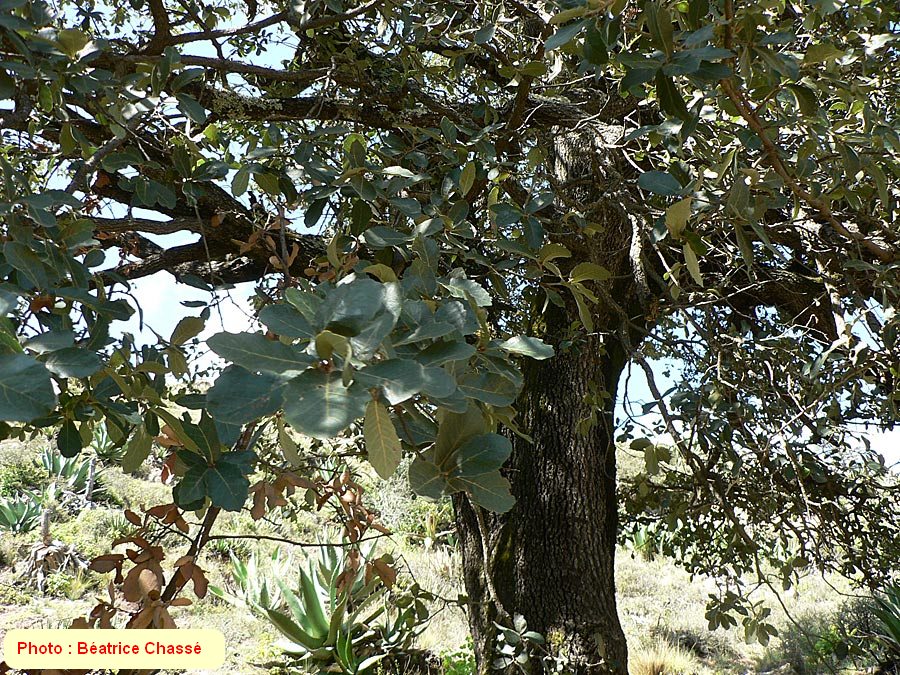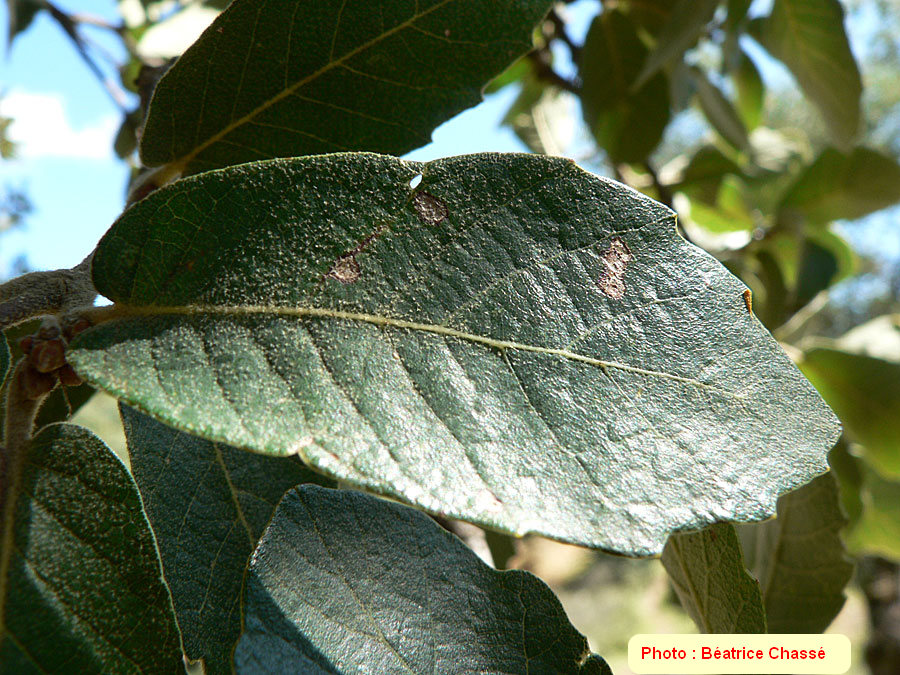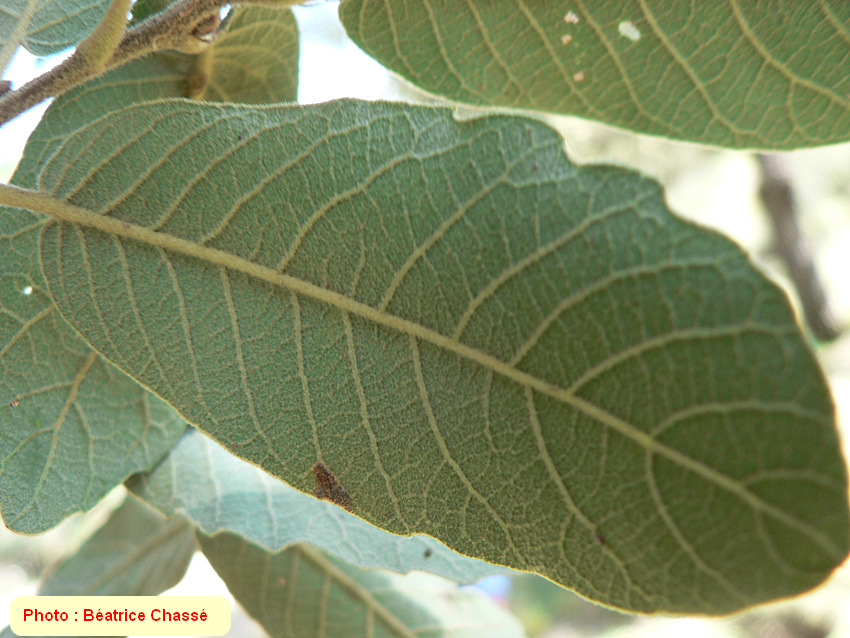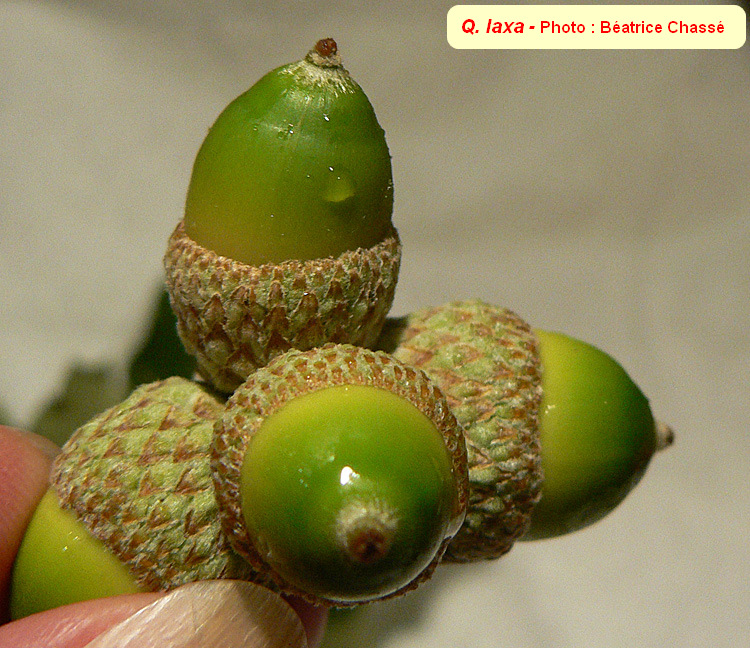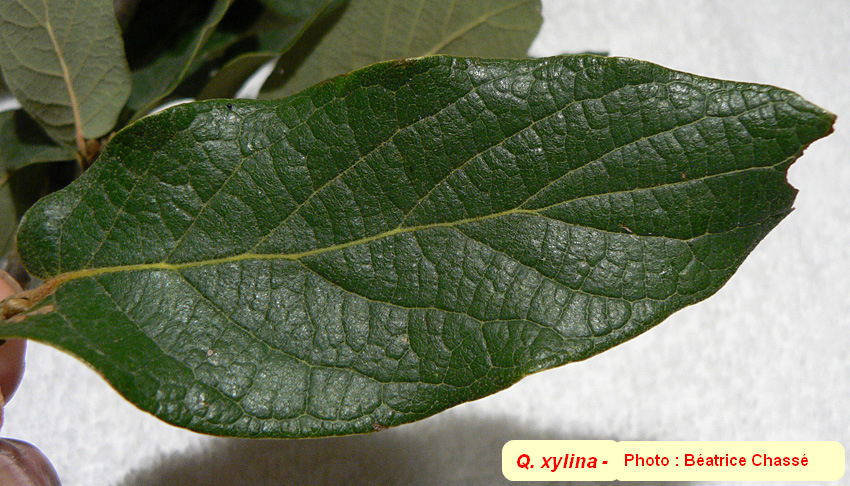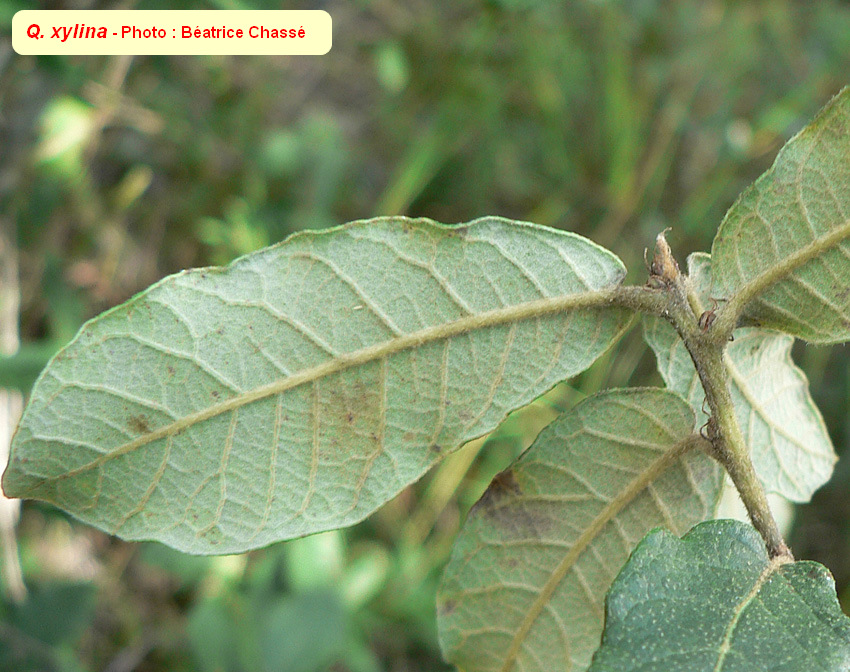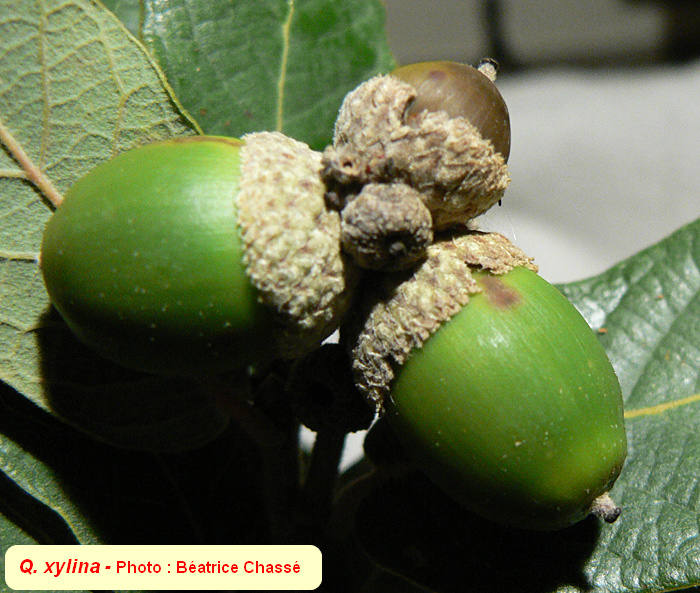| Quercus xylina | |
| Author |
Sheidw. 1837
Diagnosis here |
| Synonyms | laxa
Liebm. 1854 callosa Mart. ex A.DC 1864 reticulata var. laxa (Liebm.) Wenz. 1884 |
| Local names | |
| Range | Mexico (Durango, Guanajuato, Hidalgo, Jalisco, Queretaro, Sinaloa); 1650-3000 m; |
| Growth habit |
3-10 m tall; |
| Leaves | 6-8 x 3-5 cm; deciduous; coriaceous; thick; oboval or oblong; apex obtuse (sometimes acute), mucronate; base rounded or cordate, sometimes asymmetrical; margin thick, slightly revolute, crenate or with 3-6 mucronate teeth each side on the distal half of the blade; adaxially olive green, slightly rugose, glabrous or covered with scarce stellate and glandular trichomes; abaxially paler, densely and persistently tomentose (fascicled and glandular trichomes); 7-12 vein pairs impressed above, prominent beneath; epidermis white-papillose; petiole 7-13 mm long, tomentose at first, glabrescent; |
| Flowers | flowering in May; male catkins 3 cm, with numerous flowers; female ones 5-10 mm long, with 1-5 pubescent flowers; |
| Fruits | acorn
1.5-2 cm long, ovoid to oblong, glabrous; 1 to 8 together on a 4-10 cm
long pubescent peduncle; cup less than 2 cm wide, with appressed scales,
covering 1/2 of nut; |
|
Bark, twigs and |
grey, scaly bark; twigs yellowish, 3-4 mm thick, densely tomentose at first, then glabrescent; buds globose, ovoid, rarely conic, 2-3 mm long, with marginally hairy scales; stipules persistent at least one year; lenticels visible only the second year; |
| Hardiness zone, habitat | hardy |
| Miscellaneous |
--
A. Camus : n° 226 ; |
| Subspecies and varieties |
|
| Pictures |
More pictures HERE
|
